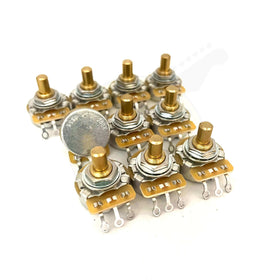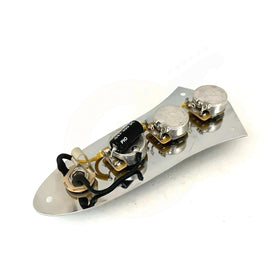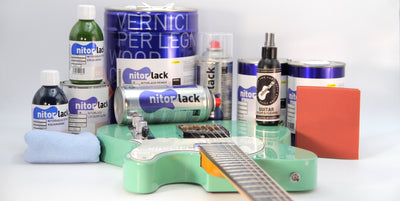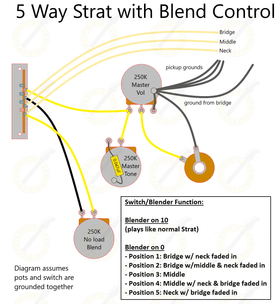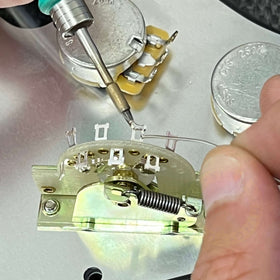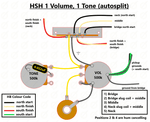Guitar potentiometers (pots) are variable resistors which we use to attenuate the signal from the pickup to the amplifier.
The potentiometer has a carbon track which allows us to vary the resistance the signal encounters before leaving the pot, hence, enabling us to control volume or tone.
You can find out in much more detail how guitar pots work using our guide.
This guide will demonstrate how to measure the resistance of your pot. It is a good habit to check the resistance of each new pot. Typically, 250k pots are used with single coil pickups and 500k pots are used with humbuckers. The higher the resistance of the pot, the more treble is allowed to pass through. ie. higher pots equals brighter tone.
To measure the overall resistance of a guitar potentiometer, simply take the resistance reading from the outer lugs (lug 1 and lug 3) using a multimeter, as per the below photo. This is easier with a digital multimeter set to "auto-range".

To measure the resistance at a given point in the potentiometers rotation sweep, you do the same but take the reading from the output (lug 2) and lug 3. Rotate the potentiometer and take the reading. This method gives the resistance based on where the wiper is during the sweep. For example, on a 500k linear pot, if we are taking the reading from approximately half way through the pot's rotation, we can expect the value to read at approximately 250k). Refer to the below photo.

The below two videos demonstrate:
1) How to measure the overall resistance and taper of any given potentiometer
2) How to measure potentiometer resistance values when in circuit.
Other Guides:
How To Make a No Load Tone Pot (DIY)


